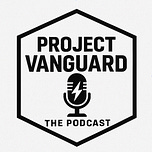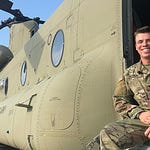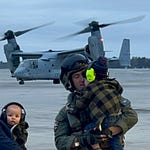“I had seven seconds to decide.”
That’s how Commander Kirk Lippold described the moment a terrorist bomb tore a 40-foot hole in the USS Cole, killing 17 of his sailors and nearly sinking the ship.
As the commanding officer, he didn’t flinch. He got to work. Damage control. Sailor safety. Power restoration. In the chaos, the mission was simple: save the ship. And they did.
Today, Captain Lippold is still on a mission, this time to help the U.S. become energy independent, economically resilient, and globally competitive. He’s not chasing titles. He’s connecting the dots between national security, clean energy, and leadership that actually works.
🎙️ What We Cover in This Episode
How military decisions under pressure translate into private sector leadership
Why energy independence is a national security issue
What Washington is getting wrong about energy policy
How veterans can lead this next chapter, not as figureheads, but as founders
Lippold’s work mentoring veterans and supporting bipartisan energy solutions
From Naval Command to National Security Advisor
Captain Lippold didn’t leave leadership behind when he retired. He’s briefed Congress. Served on national security advisory boards. And now, he’s focused on the long game: helping veterans and energy leaders work together to build a secure, all-of-the-above energy future.
“It’s not just about the environment. It’s about national stability. About not being held hostage by foreign powers who control critical fuels or minerals.”
He’s especially passionate about building domestic supply chains, protecting U.S. critical infrastructure, and educating policymakers who’ve never worked a day in energy or worn a uniform.
Veterans as the Vanguard
One of the most powerful moments in this episode came when we discussed why veterans matter so much in this transition.
“Veterans aren’t partisan. They’re mission-driven. And the mission now is American energy independence.”
That’s the ethos we live by at Project Vanguard and Lippold brought it home. We’re not here to perform patriotism. We’re here to build.
Because we’ve seen what failure looks like.
If you want to understand what energy security really means or what true leadership under pressure sounds like, this is the episode.
It’s not polished. It’s real.
And if you’ve ever wondered what a next tour of duty could look like for veterans in America’s energy sector, listen to this.
Because the mission never stopped. It just changed shape.
Timestamps
00:00 – Introduction
02:08 – Commanding the USS Cole during a terrorist attack
06:14 – The power of training, trust, and preparation
10:17 – National security lessons applied to energy infrastructure
14:00 – Grid resilience vs. grid reliability
17:41 – What civilian energy planners can learn from military culture
21:44 – Cybersecurity threats to the grid
25:39 – How perception and misinformation shape vulnerability
30:22 – Balancing decentralization with national security
34:18 – Lessons from Pearl Harbor to PG&E
38:47 – The role of leadership during uncertainty
42:50 – Designing for the known unknowns
47:35 – The human factor in system resilience
51:58 – Final thoughts on energy, defense, and public trust











